
Stroke can affect all areas of the brain, and each stroke will have unique effects. This is because each area of the brain controls different functions, and each person’s brain is built slightly differently. That’s why therapists and doctors often say, “Every stroke is different, so every recovery will be different.”
In this article, we will discuss 9 main areas of the brain that are often affected by a stroke. Although the effects of stroke vary from person to person, we will discuss some common secondary effects of stroke in each of these areas. While each case will be unique, this can give you a general idea of what to expect with each type of stroke, as well as tips for navigating the recovery process.
To go directly to any section, you can use the links below:
What is a stroke?
A stroke occurs when blood flow to the brain is impaired. One way this can happen is if a blood clot blocks an artery and stops blood flow to an area of the brain. It’s called ischemic stroke. The second occurs when an artery in the brain ruptures and leads to bleeding inside the brain, called a hemorrhagic stroke.
During a stroke, the affected areas of the brain do not receive enough oxygen-rich blood. Additionally, blood buildup can cause increased pressure in the brain. As a result, brain tissue begins to die. Depending on the area of the brain affected by a stroke, this damage may cause changes in some sensory, motor or cognitive functions. Therefore, prompt emergency care is crucial to minimize tissue damage and reduce the severity of a stroke. While some strokes can be treated medically, others may require surgical intervention.
Although dead brain cells cannot be revived, recovery is possible thanks to neuroplasticity. This process allows healthy parts of the brain to take over the functions of areas damaged by a stroke. While this process occurs naturally and contributes to spontaneous recovery, neuroplasticity can also be optimized through dedicated rehabilitation exercises.
The goal of stroke rehabilitation is to restore or compensate for the secondary effects of the stroke. These effects vary from person to person, depending on the size and location of the stroke. By working with your rehabilitation team and staying consistent with your stroke therapy exercises, you can work to reach your highest potential and increase your independence.
Cortical and subcortical strokes
Before we delve into the different areas of the brain often affected by stroke, you should know the difference between cortical and subcortical stroke. This will help you understand what a stroke may mean in different areas of the brain.
The the cerebral cortex or cerebrum is a large part of the brain that includes 4 lobes. These are the frontal lobe, parietal lobe, occipital lobe and temporal lobe. Strokes in these areas are known as cortical strokes. In addition to the brain, there are subcortical structures that lie deep in the brain. Subcortical refers to the area “below the cortex.” This includes structures such as the thalamus, hypothalamus, and basal ganglia. Strokes in these areas of the brain are called strokes subcortical strokes.
The arteries supplying the subcortical areas of the brain are smaller and more delicate. Therefore, a subcortical hemorrhagic stroke can occur when these delicate arteries rupture due to high blood pressure or other complications. However, the subcortical area of the brain may still be affected by ischemic stroke. When ischemic stroke occurs in subcortical areas, it is called lacunar stroke.
There are many differences between cortical and subcortical strokes. For example, cortical strokes often affect higher-level functioning. Therefore, cortical strokes often result in aphasia or unilateral neglect. On the other hand, subcortical strokes are generally associated with motor symptoms such as hemiparesis. In the next section, we will discuss the specific effects of stroke on these areas of the brain.
The main areas of the brain affected by a stroke
Below you will learn about 9 different areas of the brain that may be affected by a stroke. In each section, you’ll find a summary of the effects of each type of stroke to help you understand common patterns. Additionally, you can click on the link in each section for more information.
Remember that the effects of stroke will vary from person to person, so it may be helpful to read the full list of secondary effects of stroke. This may give you an even better idea of what to expect. You can then work to create a stroke recovery plan that suits your specific needs and goals after a stroke.
1. Frontal lobe stroke
Almost one third the brain consists of the frontal lobe. Therefore, it should come as no surprise that the frontal lobe plays a role in many functions. Motor skills, executive functioning, speech, language, and social skills are all controlled to some extent by the frontal lobe.
The effects of a frontal lobe stroke (a type of cortical stroke) include motor impairment, problems with problem solving and judgment, behavioral changes, and speech difficulties. These speech difficulties may include: aphasiadysarthria or apraxia of speech, among others.
2. Parietal lobe stroke
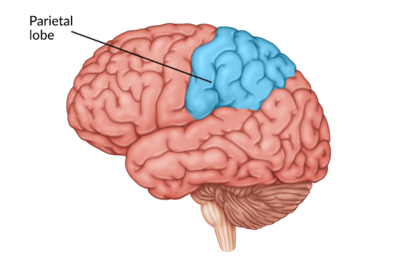
Most often, it concerns a stroke of the parietal lobe sensory interpretation, language skills and spatial awareness. Some secondary effects of this cortical stroke include hemineglect and poor proprioception or body awareness. Additionally, survivors of a parietal lobe stroke may experience difficulty writing (agraphia), difficulty reading (alexia), or difficulty speaking (aphasia), among other symptoms.
3. Temporal lobe stroke
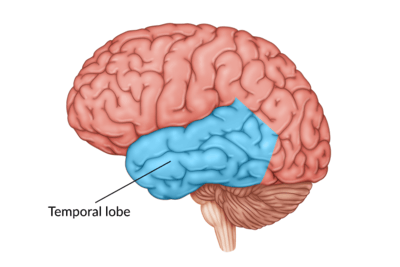
The temporal lobe, also part of the brain, is the area of the brain that controls language comprehension, hearing, and other sensory processes. A temporal lobe stroke can affect hearing, vision and speech understanding, among other side effects.
4. Occipital lobe stroke
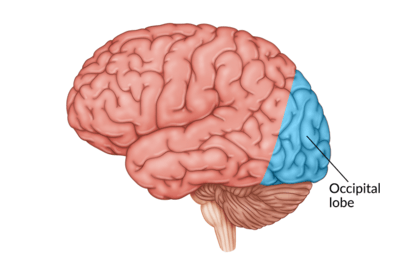
The occipital lobe plays a large role in your vision. As a result, an occipital lobe stroke (a type of cortical stroke) often causes vision problems. This may include loss of central vision, cortical blindness, visual hallucinations, or other side effects such as prosopagnosia.
5. Brain stem stroke
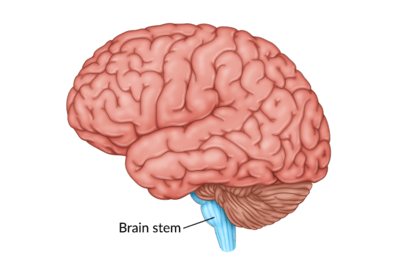
The brainstem consists of the midbrain, pons, and medulla oblongata. A stroke in any of these areas is considered a brainstem stroke. Although brainstem strokes are less common than other types of strokes, they are often life-threatening due to the vital functions of this area.
The brain stem controls basic body functions such as breathing, sweating, and consciousness. Therefore, common changes caused by a brainstem stroke include, but are not limited to, coma, difficulty breathing, and difficulty swallowing (dysphagia).
6. Cerebellar stroke
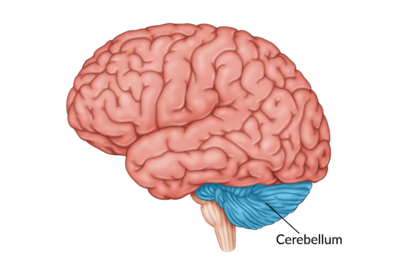
A cerebellar stroke is called a cerebellar stroke. The cerebellum controls some sensory functions and voluntary movements, especially balance and coordination. The effects of a cerebellar stroke may include, but are not limited to, ataxia, difficulty with balance, and problems with spatial awareness. In addition, dizziness often accompanies cerebellar stroke.
7. Thalamic stroke
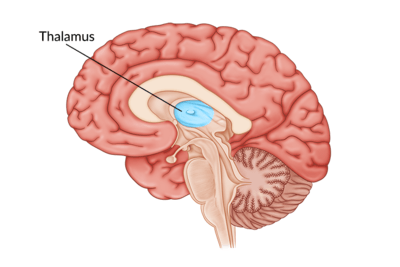
When a stroke affects the thalamus, it is called a thalamic stroke and is considered subcortical. One of the greatest effects of thalamic stroke is sensory problems, as the thalamus transmits 98% of all sensory input. Although numbness and sensory disturbances are extremely common after: thalamic strokeOther effects such as changes in attention and memory may also occur. Central post-stroke pain, a type of chronic pain, also occurs frequently after thalamic stroke.
8. Basal ganglia stroke
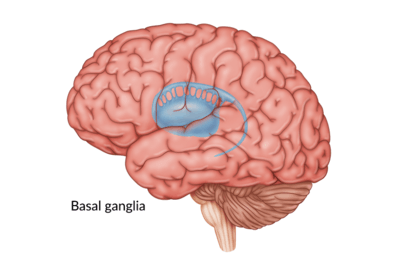
The basal ganglia are most associated with emotions, voluntary muscle control, cognitive function, and memory. Therefore, strokes of the basal ganglia often occur emotional blunting, post-stroke depression and motor disorders, among others. Additionally, this type of subcortical stroke may cause survivors to experience changes in learning.
9. Stroke of the inner capsule
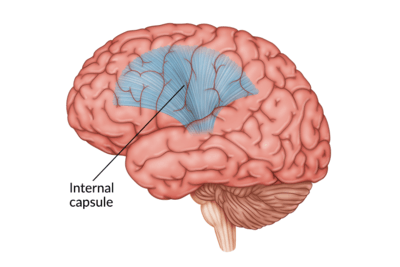
The internal capsule is another subcortical region located deep in the brain. This unique area connects different parts of the brain and plays a large role in movement. Therefore, the most common effect of internal capsule stroke is motor disorders. This may include hemiplegia and facial weakness, although a stroke in this area of the brain can also affect hearing, sensation and cognitive function. If motor impairment is the only secondary effect, then this type of stroke is called: clean engine stroke.
Left hemisphere versus right hemisphere stroke
In addition to the various lobes and structures, the brain is also divided into two halves, called hemispheres. Each hemisphere contains four cortical lobes and subcortical structures. When reviewing the different areas of the brain that may be affected by a stroke, it is also worth looking at the differences between the two hemispheres.
Both hemispheres of the brain perform many of the same functions. However, there are some differences and these differences vary from person to person. Generally, the left hemisphere contains the language-producing areas. This is why language difficulties are often associated with left hemisphere strokes. On the other hand, the right hemisphere is believed to control self-awareness and object recognition.
Moreover, each hemisphere controls movement on the opposite side of the body. Typically, a left hemisphere stroke causes motor impairment on the right side of the body. However, a right hemisphere stroke is likely to impair movement on the left side of the body and may lead to left hemisphere paralysis or hemiparesis. When a stroke affects both hemispheres, you may experience motor changes on both sides of the body.
Brain areas affected by stroke: recovery
If you have suffered a stroke, it is important to talk to a neurologist about your specific diagnosis. Ask them about the location and type of stroke you experienced, as this can help you identify and understand what secondary effects you can expect. Once you understand the location and effects of a stroke, rehabilitation can continue more effectively.
The process of recovery from a stroke is unique to each person because every stroke is different. The specific symptoms you experience depend largely on the area of the brain affected. However, there is always hope for recovery with a dedicated rehabilitation program. This also applies to people in chronic stages of recovery. The most important thing to do is to never lose hope during a stroke.
Continue rehabilitation to get as close to full recovery from your stroke as possible. Over time, you may notice the return of important features that can increase your independence. Rely on those around you, seek support in your community, and never stop pursuing your recovery goals.